
Termites, Cockroaches And Spiders can run but they can't hide from Micropest Pest Control Sydney.





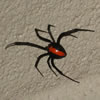
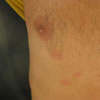

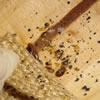


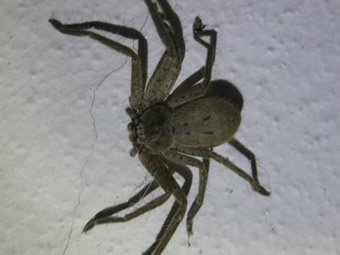
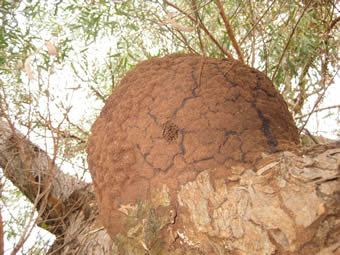
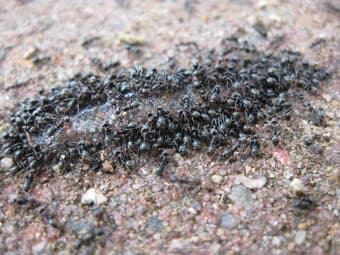

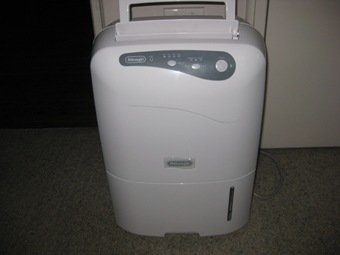
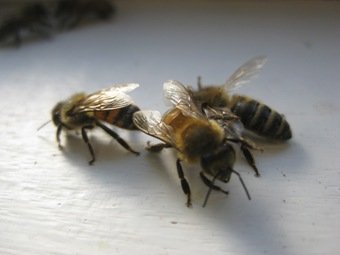
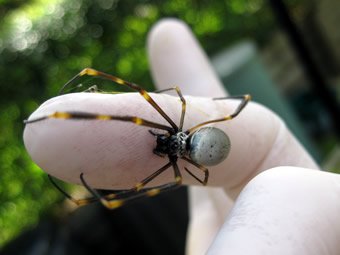
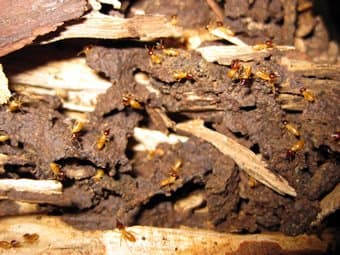
|
Flies and Fly Control by Micropest Pest Control Sydney OPEN 7 AM - 10 PM 7 DAYS.There is no doubt that when we think of insects in relation to everyday public health, flies always come first to mind. Despite this, there are many misconceptions relating to "the fly problem". The term "flies" is not precise. In common speech, it usually means insects that are either houseflies or blowflies or others sufficiently similar to these for us to be uncertain about their identity. In public health, a similar meaning applies but with an added association with human beings or their dwellings. Although still vague, a more meaningful term, "filth flies", is now in use. This refers to their propensity to breed in decomposing organic material of animal or vegetable origin. The more conspicuous of such flies are often attracted to foodstuffs and are liable to enter houses. The imprecise terms used reflect not only an inability to differentiate species but also an unwillingness to do so because all so-called "flies" are despicable creatures. This seriously hinders a proper understanding of "the fly problem" and an intelligent approach to control. Most of us recognise houseflies as such and also blowflies. Fewer differentiate the housefly from the lesser housefly or between brown and green blowflies. But these do not all present the same problems either in their importance to human beings or in their control. Although some types of control measures may affect all species indiscriminately in the places where applied, as knowledge accumulates and more refined techniques become available, we are likely to find that the most effective controls are specific for an individual species. The screening of a house affects all species, and the use of adequate dosage of insecticide on a garbage dump area presumably affects all species present. But there are some reservations in the latter case since it is conceivable that in an individual species, resistance to an insecticide could develop. On the other hand, it is quite apparent that not all species are primarily derived from the same breeding sources and measures applied to so-called major breeding habitats will not have an equal effect on all species. However, since much remains to be learned about the behaviour of individual species, "flies" will still be talked about collectively in the following discussion. As far as possible, those facets of behaviour that are individual to species will be revealed. Flies and DiseaseStructurally, the individual fly is well-formed to carry bacteria and other pathogens. Its feet are hairy, as is the expanded tip of the mouthparts, which, when feeding, spreads over a considerable area of other food material relative to the size of the fly. External contamination of both feet and mouthparts occurs, but in addition, the fly swallows microorganisms, many of which survive or even multiply in the insect's gut. While feeding, flies frequently defecate and vomit ("fly spots"), and these are additional ways of contaminating food ln its habits "the fly" is well adapted to disease transmission, and this will be more apparent in the following paragraphs. From our point of view, "flies" show a complete lack of discrimination in the materials they visit, the extremes which commonly interest them being faeces and foodstuffs. Since the basic element in disease transmission by flies is mechanical transfer, the responsible pathogenic organisms must be accessible in media to which flies are attracted for feeding or breeding. Without a doubt, the medium which satisfies this requirement to the greatest degree is human faecal matter; sputum and suppurating discharges could be of minor significance. That flies can become contaminated with bacteria and other disease-causing organisms has been adequately demonstrated in various ways. The correlation of high incidence of enteric disease with high fly densities has been validated by marked decreases in disease following effective fly control when this has been possible under controlled conditions such as military encampments. Comparisons of disease incidence in comparable areas without and with fly control (on a scale exceeding that normally practised) have given positive indications of reductions of some but not Common Pests and Public Health in NSW all enteric diseases, and no demonstrable difference in the case of certain other diseases which have been considered to be fly-borne in the past (poliomyelitis), The availability of faeces to flies varies greatly in different communities. Hence the potential significance of flies will be equally variable; a corollary of this is, of course, that control of fly-borne diseases can be effected to a very large degree by sanitary methods of faeces disposal rather than by fly control. Furthermore, if we reflect on the primary importance of the faecal matter and the possibilities of mechanical transfer therefrom, it is abundantly clear that fingers have precedence over flies. Hence personal hygiene may be of more immediate importance than flies. To be sensible about this, we must grant that where faeces are disposed of in the streets, fingers are unwashed, and food is displayed for sale unprotected in the open, flies are likely to be abundant and play an important role in disease transmission. This is an extreme case, and even so, flies are only one facet of disease transmission. Modern evidence tends to emphasise the importance of flies as mechanical transmitters(vectors) of some, but not all, diarrhoeal diseases, the summer diarrhoeas, for example. On the other hand, diseases such as poliomyelitis, often considered to be fly-borne, show very little correlation with fly abundance despite the fact that the virus is accessible to them and can be recovered from them. ln countries where typhoid fevers are common, flies almost certainly contribute to their transmission, and they may also help to transmit cholera in endemic areas. On the other hand, when flies are not particularly common or when their populations are seasonally depressed, the importance of other incidental means of mechanical transfer of pathogens should not be overlooked. There is little that flies can do which cannot be just as readily achieved by unwashed fingers. HabitsThe housefly is a camp follower in human communities. It, and the common domestic mosquito, are the two flying insects that have best adapted themselves to life with human beings. Both revel in filth. The lesser housefly, very similar superficially to the housefly itself, often enters houses but spends most of its time interminably circling the room; not all blowflies choose to enter houses frequently; the brown blowflies are the only ones that do so with predictable regularity. These and other blowflies spend most of their time buzzing against window panes. The brown blowflies are popularly regarded as the most revolting of flies, and many more houses are screened in areas troubled by these; while they do deposit small maggots very freely, the "blowing" of food is not the problem it was in the days before refrigeration. It is important that there should be a clear realisation of the greater menace to health afforded by the housefly. To some extent, measures relating to waste disposal and general hygiene jointly affect houseflies and blowflies, but further improvements must take into account the individual species concerned. The public health problem involves both the factors individual to the housefly and those which overlap with other species. Little critical research has been done on this special area, although it can be broadly defined (see section on breeding places). The significance of the housefly in the transmission of disease relates to both its habits and its structure. The housefly is one of the very few flies which is comfortable inside houses. lt behaves with all the familiarity of an old inhabitant, busily investigating anything that it finds attractive during the daytime and resting on walls and ceilings overnight. lt is attracted to substances that provide it with food, moisture and also media on which it may lay its eggs. Food is provided by most foodstuffs utilised by human beings with some emphasis on sugars and animal protein, by the wastes associated with the preparation of human food and by human and animal excreta. An attraction for feeding is fairly equally divided between the two sexes. Hungry male flies and females ready to lay eggs are attracted to potential breeding media, which are typically most forms of decomposing vegetable material or animal and human faeces. One other feature of the behaviour of flies that is important is their liking for "attractant areas", local situations in which particularly suitable conditions of temperature and humidity are combined with the presence of attractive odours and reduced daylight. If all these factors are present, those flies which are attracted to the area (it may be simply a back porch or a garbage tin in the shade of a house or a milking shed) tend to remain, giving rise to an increasingly high density of flies. The kitchen and its immediate vicinity, whether domestic or commercial, is the commonest source of fly attraction in the public health context. In this situation, any measures are taken to reduce fly abundance immediately reduce the amount of contact of flies with human beings and their foodstuffs. Flies do not discriminate among the substances they investigate for moisture. food and egg-laying sites; contaminated and uncontaminated materials are visited with equal freedom, often within a matter of minutes. Even under good sanitary conditions, contaminated materials may still be available such as the soiled nappy in the laundry basin or the dog's droppings outside the back door Fly abundanceHouseflies and blowflies increase or decrease according to seasonal and climatic factors together with the availability of breeding materials. The housefly in New South Wales is a summer-early autumn fly, as are some blowflies, but others tend to have spring and autumn peaks. The populations of houseflies in Sydney vary considerably between areas with fly susceptible tendencies and those without. From one year to another, gross variations appear to be determined by climatic factors. Broadly, wet seasons tend to depress fly numbers, dry seasons increase them, but prolonged drought also inhibits their development. The precise effects of climatic vagaries are not adequately understood. Over the winter, a few adult flies take shelter in warm secluded places, and a few maggots probably go through a prolonged larval development to emerge as adult flies with the onset of warm weather. For most practical purposes, it is wise to assume that the fly population at the beginning of each season is virtually non-existent. The high population densities usually achieved during the summer months arise within the succession of generations stemming from the very few winter-time survivors. However, one of the most important facets of fly population dynamics is that successive generations do not produce more and more flies. Parasites, predators and unsatisfactory sequences of climate suppress this build-up in varying degrees. The immature stages, larvae and pupae, are the most vulnerable. Should environmental circumstances generally become favourable for development, a considerable fall in mortality of the immature stages occurs, rapidly causing an enormous increase in the adult fly population. When this occurs at irregular intervals, we may well say that the climatic conditions have been unusually favourable. lf the seasonal variations in population density of any individual species are studied, a seasonal peak is revealed, which can be correlated with normal climatic factors. If the study is more detailed, an erratic pattern of population fluctuation is revealed, which does not tit any conceptions of a smooth population build-up followed by a similar decline. In other words, although there are definite and predictable seasonal trends, within these, there are gross short-term population fluctuations. Actually, it is not unusual for maximum densities to be achieved within two or three weeks following a very low level of abundance. Again, the peak may be followed by a period of sustained high densities or by an immediate drop to a further low level. At present, these short-term fluctuations are not predictable, but in relation to the fly problem, they are of much greater importance than the broad seasonal pattern. It is in these brief explosions that the existence of a fly problem becomes generally realised, complaints are made, and controls initiated. Often these attempts at control are ineffectual partly because it is too late to prevent breeding that has already taken place and partly because there will be an inevitable natural decline with or without control. However, in case this engenders a fatalistic attitude to the problem or reinforces one already present, it should be emphasised that these short-term peaks, when examined carefully, may lead to an understanding of existing defects in such established control methods as may have been employed. If these are heeded, improvements can be effected. A final point on fly abundance relates to time in relation to economic developments. There have been very great changes in sanitation and in transport in the present century. The maximum housefly populations of the past, when the horse dominated transport and sanitation was undeveloped, should not be seen again. However, the problem is not measured by a 50-year-old yardstick, and people inevitably adjust the acceptable minimum of fly activity to the present time. Although we no longer use gauze meat covers and beaded milk jug covers on our dining tables, this does not mean that the present generation is unaware of a fly problem. DispersalAround a very limited breeding place (a single manure heap), houseflies may be troublesome over a radius of sixty metres or so if their needs can be satisfied in so small a compass, large breeding sites such as a garbage disposal area can supply flies to distances of at least 400 metres. Fly plagues from breeding sites concentrated in a hundred hectares may infest areas up to a radius of seven kilometres. Marked houseflies have been recovered six to eight kilometres from a release point and may travel in all directions, both with and against prevailing winds. The direction of movement from a food source cannot be anticipated unless experience reveals a regular pattern. houseflies do not seem to penetrate clean bushland, so it is likely that their movements are, to a large extent, a response to odours, and the multiplicity of odours in urban zones tends to keep them confined to these. However, farms provide other centres of housefly abundance. ` ln the case of complaints, it is always worth attempting to trace fly densities to their maximum points, This does sometimes reveal the possible source area, but this may be obscured because exceptionally attractive places tend to cause adults to accumulate. Blowflies, on the other hand, are essentially non-domestic. Although primarily carrion breeders, they have found some of man's wastes equally satisfactory. Blowflies range the countryside, and distances travelled may be considerable. They are also attracted to urban gardens. Buildings may operate as traps. In general, they fly close to the ground. Sometimes screening of the ground floor of a multi-storey building is sufficient to prevent their entry. At other times it appears that convectional air movements on sloping ground or among buildings may cause an unexpected infestation in the upper stories of buildings. ln the case of the bush fly, long-distance wind-borne migrations do certainly occur. Life historyThe female housefly deposits eggs in batches, usually in excess of a hundred, and during her lifetime, may produce more than 2,000 eggs. Hatching takes place in eight to twelve hours, and the larva feeds and develops for several days and finally changes to a pupa from which the adult emerges in three to six days. The entire life cycle takes about ten days but can be a little less under particularly favourable conditions or extended when cooler temperatures prevail. Some of the most successful breeding media generate heat, and optimum conditions may be found near the surface of the medium irrespective of weather conditions. The bush fly can breed rather faster than the housefly; blowflies in the main take a little longer to complete their development. Breeding placesThe decomposing vegetable wastes which are particularly suitable for housefly breeding may be found in horse manure, in pig, cow and poultry manure; in the droppings of large dogs; in the vegetable wastes of the kitchen and fruit and vegetable shops; in composting grass and other garden rubbish; in soil contaminated by animal manure; in human faeces and soil contaminated thereby; in spilled or moist stock foods; in mushroom compost; and in straw or even sawdust contaminated by animal wastes. Any of these materials produce many flies. A group of people may be worried by the flies bred from a few cubic feet of stacked animal manure. Other potential breeding places are so various that examples of minor ones are to be found almost anywhere. If potential breeding sites are kept under observation, most will be found to be free of breeding for long periods of time and then suddenly become active. The litter in poultry sheds is often without any obvious housefly breeding for the greater part of the year, even though the lesser housefly may be commonly observed. However, without any obvious changes in the medium itself, housefly breeding can suddenly become apparent. lt is important to realise that the absence of flies and the absence of fly breeding does not confer immunity from fly breeding in any given possible medium. At our present standard of living, no further progress in fly control is likely to be made unless potential fly breeding sites are recognised and regarded as positive sites all the time, not merely when flies are abundant. Potential sites include materials that legitimately contribute to our way of life, such as animal wastes used as garden fertiliser, as well as the wastes which should always be destroyed or otherwise disposed of and not left as litter in backyards, streets, vacant blocks and along highways, waterfronts and picnic areas. Although standards of tidiness in private areas have risen markedly in recent years, the reverse is very patently the case in public areas. Areas with an obvious fly breeding potential are garbage dumps, stock saleyards, dairy farms, piggeries, racecourse areas, intensive vegetable or poultry raising communities, and fruit and vegetable processing and canning industries. All of these should so handle their wastes that no major possibility of fly breeding exists. Wastes that cannot be satisfactorily disposed of should be treated with insecticides. Minor fly outbreaks occur independently of any of the above. Whether the major sites act as reservoir areas is not clear, but they certainly may, and adequate control in such areas would probably tend to make fly-prone areas relatively fly-free. If the smaller outbreaks are to be eliminated, then attention must be given to all those little things, individually insignificant, that add up to the type of fly infestations that the majority in our community suffer. Housefly controlThe interiors of houses can be protected from flies by a screening of doors and windows. If a chimney is present, this must also be screened during the summer months. Screening protects people and food from most contact with flies but has no effect on the fly population. But we are evolving a type of housing, with combined indoor and outdoor living, which cannot always be protected by insect screens. The house itself can vary in its susceptibility to flies; here, the kitchen is important, and where cross ventilation and other means of removing food odours are good, flies will tend to be fewer; where cooking odours linger for long periods, more flies will be attracted. Habits also contribute: washing-up should not be left standing for long periods, spillage should be removed when it occurs, and appliances kept clean. Flies that enter can be controlled with household sprays, those containing pyrethrins or pyrethroids being the most suitable. Aerosol formulations are the most efficient and can be economical if used with restraint. lf there is to be an effective community approach to the fly problem, this must start in the kitchen. Food scraps should always be wrapped in paper. Drained first if wet and placed in garbage tins with close shutting lids. Unfortunately, the effectiveness of the lid is often spoiled by the bad handling of the can in the process of emptying into the garbage truck. There is room for improvement on both sides of the fence. The householder should not cram garbage so tightly in the can that it has to be forcibly emptied, and the collector should not mishandle the can indiscriminately. There is also room for co-operation by collectors in the removal of excess garbage if presented in cartons, and by householders in making use of the service on each day it is available. The householder should keep the garbage can clean (easy when wastes are wrapped), make sure that the bottom is sound, preferably stand it on concrete, and at such a distance from the backdoor that any flies attracted to it will not enter the house when the door is open. Food tins are particularly attractive to flies and should be washed before placing them in the can. In relation to the fly life history, the desirable frequency of garbage collection is twice weekly. Vehicles should be covered. When dumped, garbage should be compacted and covered each day, never dumped and left. It is preferable to dump at the base of a slope and compact and cover up a ramp as it is virtually impossible to avoid exposed faces when dumping down a slope. Garbage is an important commodity in community development when used to fill low-lying areas or create level areas on irregular land. Although almost always dumped to achieve a level surface, garbage may be so handled that any desired type of rolling landscape, as is appropriate for golf courses, may be created just as easily. Incineration of garbage has waves of popularity but is always expensive, and non-combustibles remain a problem. The firing of dumped garbage is hazardous, wasteful, AND NOT ENVIRONMENTALLY FRIENDLY. Methods of garbage collection are changing with the introduction of larger truck-adapted bins supplied to householders and collections being reduced to once weekly, and no doubt collection and disposal methods will continue to change in the future. Disposable domestic waste containers have been in vogue for some years but have disadvantages once they leave the household. Domestic garbage is a big enough problem, but in today's cities, it is overshadowed by industrial and trade wastes, both solid and liquid, and the high component of virtually indestructible materials. The developing methods of handling these, in respect of both collection and disposal, will inevitably improve our handling of the fly-prone putrescible. The essentials of the problem are rapid collection, concentration and partial compaction (or some other suitable alternative such as fragmentation) at strategically situated transfer stations, bulk haulage to disposal sites and immediate coverage. The householder should also realise the potentialities for breeding provided by composting, especially of grass cuttings, by the use of animal manures and by backyard poultry breeding. Composting is safer in thin layers applied directly to the soil surface. Compost pits and heaps do not breed flies continuously, but generally, the householder is unaware when breeding does occur. The same applies to stored animal manures and other organic fertilisers. The various recommendations made in the past for the management of such materials have proved unacceptable to most people, and reliable alternatives have not been established. However, excessive dryness or wetness of the medium inhibits most fly breeding. Insecticides can be used but suffer from the serious disadvantage that when an abundance of flies suggests their use, breeding has already taken place. Local authorities should be well aware of the enormous potential for fly breeding presented in their garbage disposal areas. Most do apply various controls, but none perfectly. Even apparently successful control can break down suddenly and permit enormous numbers of flies to develop within a week or two so that constant vigilance is needed. lnstitutions, hotels, cafes and vegetable and meat shops have residue problems similar to but greater than domestic residences. Daily collection of wastes should be undertaken from these, as garbage will inevitably attract flies to the area, and the risk of contamination of foodstuffs is very great. Not all such wastes are under local authority supervision since some are salvaged for use as pig food or even for open composting for vegetable production. Local authorities should take a particular interest in this problem and in out what is being done with swill. Sometimes vegetable wastes are taken from one council area for use in another, making supervision of fly abatement even more difficult. The areas in which wastes are stored should be so designed that they can be completely and thoroughly swept or hosed down daily. They should not be used for any other type of storage that will impede cleaning. Modern town planning policy is removing the fly hazard provided by dairy farms from residential areas, but pig and poultry production, and horticultural activities, are scattered throughout semi-rural suburbs. No serious attention has been given to this problem as yet. Methods of handling poultry are changing so that more successful management of poultry manure can be achieved. The general trend is the running of cockerels on the ground beneath batteries; these busily search for and devour maggots. However, no marked improvements are likely until the problem has been fully investigated. Piggeries are also permitted in outer suburban areas and present a serious fly breeding hazard if improperly managed. Storage of organic fertilisers or by-products of horticulture such as "mushroom compost" can be a source of flies to nearby residential areas. Control by insecticidesCompared with 40 years ago, there has been a reduction of the fly problems in suburban and industrial areas and some, but not all, country townships. ln, the early part of this century, fly swats (or alternatives) and sticky flypapers were in very common use. Foods were kept without refrigeration under gauze domes or in gauze safes. Most of these practices have virtually disappeared, and insecticidal fly control has played no part in this. Some situations do require the use of insecticides, which reinforce basic sanitary practices. Without the latter, insecticides do not make any obvious impression on the fly population unless they are very sweeping, as with aerial applications. There is little prospect that aerial application of insecticides will become a standard practice in towns. Knock-down insecticides can be used inside the home to overcome adults. Residual insecticides can be effective when applied to obvious fly attractant sites. They might well be part of the routine management of slaughterhouses and saleyards, for example. If these are the sole measures employed, they are likely to do more for the public image of such places than for the general fly nuisance in surrounding areas. Insecticides are often used over breeding areas, sometimes as an essential such as in trenches into which night soil is deposited, but they are not universally effective. Poisoned lures were one of the old methods advocated for fly control but have not been in vogue for many years. Nevertheless, some of the more recent insecticides are used in this way, sometimes with spectacular results. However, as with most other pests, the number of dead flies is of no significance compared with the number that remains alive. The only acceptable index of control is based on living flies, not dead ones. For control of domestic infestations, aerosols containing pyrethroids are suitable as knock-down insecticides inside the home. Breeding of flies can often be eliminated very easily in the home environment by appropriate sanitation, but adults congregating in attractant areas and maggots breeding in refuse or compost may be controlled, if necessary, by using organophosphate compounds such as diazinon, trichlorfon, dichlorvos or bendiocarb in accordance with the recommendations for the particular proprietary products. Perspectives in fly control(a) Our primary objective in fly control is linked with the diseases they can carry. Our secondary objective is freedom from annoyance. Linked with both is a feeling that flies are not aesthetically acceptable. (b) lt is often forgotten that the diseases for which flies may be responsible are transmitted by other means with equal facility. lt is not good enough to control flies if we neglect personal hygiene. (c) Basic to both disease control and fly control is community hygiene and sanitation. (d) Nowadays, nearly everyone is prepared to accept that disease prevention is preferable to treatment, but not everyone accepts with sufficient conviction that fly prevention is much more important than control. The preventive things which contribute to fly control should be just as automatic as washing our hands. (e) The sanitary practices which are preventive for flies begin with the disposal of all wastes within the home and continue far beyond to the point where these become or are made inaccessible to flies. (f) In urban areas, the abundance of flies is taken as an index of the general sanitary status of the community. ln country areas, this remains true for houseflies, but blowfly abundance is not necessarily linked with sanitation. (g) Preventive measures for the individual rather than the community are: (a) exclusion by means of fly screens (this is the most effective means of protection for the individual household) and (b) the reduction of attractants and attractant areas, (h) insecticidal control is only additive to, not a substitute for, preventive sanitary practices. Insecticides may be required to reinforce these, or they may be used to solve the immediate problem of flies causing annoyance. (i) Residual insecticides are useful on major attractant areas but are wasted when due regard is not given to fly habits. Knock-down insecticides, especially aerosol formulations, are the most effective means of dealing with the immediate problem of flies that have entered dwellings. (j) A more intelligent approach to fly control will come with an understanding of the relative significance, sources of origin and behavioural differences of individual species. Notes on individual species(a) Species which commonly enter houses: When the external environment is unsuitable (very high temperatures), more species will enter houses than are prone to do so with any consistency under normal conditions. Musco domestica. The housefly. This species breeds in decaying or fermenting organic material, preferably rather moist. The matter directly or indirectly of vegetable origin is preferred - decomposing vegetable material, garbage, grass clippings, horse, pig, poultry and other animal manures. Potential breeding media may be free of maggots for long periods then suddenly become highly active. M. domestica is a human-dependent species, scarcely existing away from human beings and domestic animals. lt is the fly most frequently and constantly found inside buildings wherein it is perfectly at home and freely visits foodstuffs and wastes. High densities of M. dornestica usually indicate a nearby major breeding source within a few hundred feet or sometimes up to a quarter of a mile away. The present practice of dealing with these situations only when they are the subject of a complaint is not helpful to the overall problem. The primary essential in coping with major breeding foci is either their elimination or their proper management. If an adequate routine is to be established, there must Hrst be a greater conviction that this is worthwhile and the measures themselves must be acceptable and practicable. Calliphora stygia (large brown blowfly) and Cailiphora augur (lesser brown blowfly). These two can be considered together since they behave in much the same way, the main difference being that. styg/G is a spring and autumn species, and C. augur is a summertime one. Although both exploit garbage, they are still basically carrion species, and their population densities are not extremely different in fly-prone urban areas and natural bushland. Both enter houses fairly freely but in the main do little more than try to escape. lt is unlikely that control of human-created breeding habitats would materially affect the populations of these flies, so that exclusion is the most realistic Grst step. Fannia spp. (canicuiaris, australis, scalaris). The lesser housefly. These species breed in organic material in a fairly advanced state of decomposition. There is some predilection for the droppings of birds, and urban problems of these species are associated with nearby poultry. They are far less common than houseflies and blowflies, but their circling flight within a room makes them a very obvious problem when present. Muscina stabuians. The false stable fly. Although this species is known to breed in a wide variety of vegetable and animal media, its sources in urban areas are not adequately understood. Inside houses, it visits foodstuffs but is not usually a major problem. (b)Species not commonly entering houses Lucilia sericata. The European green blowfly. This species is an introduced one which has a very strong relationship to garbage. It is the dominant species emerging from garbage dumps where it is capable of maintaining very high population densities. If this were the only species breeding in the garbage, there would be no problem as it does not appear to be important as a house visitor. On the other hand, it serves as an indicator of the standard of disposal practice in garbage dumps more reliably than any other species. lt may also be useful as an indicator of the standard of backyard hygiene in suburban areas. The use of this species as an indicator, preference to /Vl. domestlco, lies in the fact that it appears to be far less sensitive to adverse climatic conditions and is present throughout the year in particularly suitable situations. Furthermore, it does not move far from the area in which it breeds. In brief, an area producing L, sericota can easily convert to one producing M. Domestica when seasonal conditions are favourable. Chrysomyia megacephala. A green blowfly. In Sydney, this species appears to be definitely garbage dependent, being found only in very small numbers away from such sites, although its distribution therefrom is not as restricted as that of L. sericcito. It is probably erratic in its house-entering, but this has not really been clarified. Ophyra rostrata. The black carrion fly. If overseas Endings that O. rostrato is a species whose maggots are predatory on those of other species are applicable in this country, then this would be one of the most useful of blowfly species. Generally, the abundance of this species directly correlates with the abundance of blowflies, and it is particularly evident in garbage disposal areas. Its interactions with other species and with insecticidal control are far from clear but are certainly deserving of careful investigation. Musca vetustissima. The bush fly. This is the most spectacular of Australia's fly problems. Primarily a fly of the inland, open country, it also occurs in most rural areas and part of the time in suburban areas of most major cities and towns. This fly is active from sunrise throughout the hours of daylight. lt is very strongly attracted to human beings and animals out-of-doors. It worries people, especially by its attention to moist areas of skin, eyes and lips. Once attracted to a person or an animal, it is liable to stay for long periods, often passively; an individual walking through the bush may accumulate hundreds of these flies, remaining unaware of most of them as they are merely using their human host, especially out of reach on the back, as a resting place or means of transport. Much remains to be discovered about the bush fly, especially its sources of origin in the more arid parts of the country. However, one important source is cow dung, which must be fresh or perhaps otherwise moist since these flies can be exceptionally dense in the vicinity of irrigated pastures on which cattle graze. lt is very likely that the bush fly has diverted to cattle dung for breeding in some types of pastoral areas and is now far more common than it was even 50 years ago. It is also known that the bush fly can be carried by winds for considerable distances, and it is obvious that the wave of bush flies that infests the coastal suburbs of Sydney in the first week of November each year is derived from inland New South Wales. No sensible means of control are as yet available for the bush fly but some of the more modern repellents, advertised as effective against bush flies, are in fact very helpful, providing they are properly applied. Effective repellent chemicals such as diethyltoluamide and N-octyl bicycloheptane dicarboximide may be in aerosol formulations and the most important thing to realise, relative to their use, is that it is virtually impossible to apply a spray to one's own back. Hence get somebody else to do it for you. Fly control price listMicropest provides the following fly pest control service with an approximate price. Please don't hesitate to ring because we do have specials from time to time and we are flexible.
Micropest - Pest Control Sydney will endeavour to assist you in the best and most helpful way and will always treat the customer with respect honestly and ethically. Simply the best Fly pest control Sydney has to offer. Our Locations WahroongaAddress: 24/24-36 Pacific Highway, Wahroonga N.S.W 2076 Phone:1300 243 377 Hours: Open 7 days, 7 am–10 pm We provide the same day emergency services for the Upper North Shore suburbs of Wahroonga, Pymble, Hornsby, Turramurra, Westleigh and Thornleigh. BerowraAddress:111 Yallambee Road Berowra, Sydney N.S.W 2081. Phone:(02) 9489 0013 Hours: Open 7 days, 7 am–10 pm We provide the same day emergency services for Berowra, Galston, Arcadia, Brooklyn, Mt White, Mt Colah and Asquith. ArtarmonAddress: 43 Whiting St, Artarmon NSW 2064 Phone:1300 884 166 Hours: Open 7 days, 7 am–10 pm We provide the same day emergency services for the Lower North Shore suburbs of Artarmon, Chatswood, Lane Cove, Roseville, Lindfield, Killara, North Sydney, Neutral Bay, North Bridge and Castlecrag. |

|
|||||||||||||||||